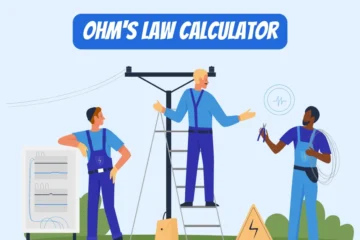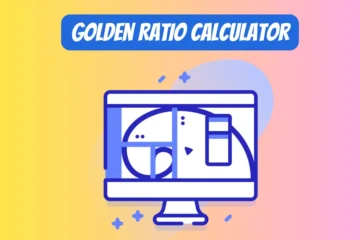Input a value in one unit and instantly see the conversion in the other two.
Table of Contents
How to use this Temperature Converter?
- Enter Values:
- Adjust the Decimal Precision to obtain a more accurate decimal value.
- To convert from Celsius to Fahrenheit and Kelvin, enter the temperature in the Celsius input box.
- To convert from Kelvin to Celsius and Fahrenheit, enter the temperature in the Kelvin input box.
- To convert from Fahrenheit to Celsius and Kelvin, enter the temperature in the Fahrenheit input box.
- Reset Values (Optional): Click the reset button to clear all input fields.
How to convert Celcius to Fahrenheit?
Formula
The formula to convert Celsius (C) to Fahrenheit (F) is:
F = C × (9/5) + 32Steps to Convert
- Multiply the Celsius temperature by the fraction 9/5
- Take the result and add 32 to it
- The value you get is the temperature in Fahrenheit
Example
Let’s say you have a temperature of 20 °Celsius that you want to convert to Fahrenheit.
- Multiply by 9/5: 20 × (9/5) = 36
- Add 32: 36 + 32 = 68
- Result: 68 °F
So, 20 °C is equal to 68 °F.
How to Convert Fahrenheit to Celcius?
Formula
The formula to convert Fahrenheit (F) to Celsius (C) is:
C = (F - 32) × 5/9Steps to Convert
- Subtract 32 from the Fahrenheit temperature
- Multiply the result by 5/9
- The value you get is the temperature in Celsius
Example
Let’s say you have a temperature of 98.6 °Fahrenheit that you want to convert to Celsius
- Subtract 32: 98.6 − 32 = 66.6
- Multiply by 5/9: 66.6 × (5/9) ≈ 37
- Result: 37°C
So, 98.6 °F is approximately equal to 37 °C
How to convert Celsius to Kelvin?
Formula
The formula to convert Celsius (C) to Kelvin (K) is:
K = C + 273.15Steps to Convert
- Simply add 273.15 to the Celsius temperature
- The value you get is the temperature in Kelvin
Example
Let’s say you have a temperature of 25° Celsius that you want to convert to Kelvin.
- Add 273.15: 25 + 273.15 = 298.15
- Result: 298.15K
So, 25 °C is equal to 298.15 K.
How to convert Fahrenheit to Kelvin?
Formula
The formula to convert Fahrenheit (F) to Kelvin (K) is:
K = (F − 32) × 5/9 + 273.15Steps to Convert
- Subtract 32 from the Fahrenheit temperature
- Multiply the result by 5/9
- Add 273.15 to the result
- The value you get is the temperature in Kelvin.
Example
Let’s say you have a temperature of 32 °Fahrenheit that you want to convert to Kelvin.
- Subtract 32: 32 − 32 = 0
- Multiply by 5/9: 0 × 59 = 0
- Add 273.15: 0 + 273.15 = 273.15
- Result: 273.15 K
So, 32 °F is equal to 273.15 K
How to convert Kelvin to Celsius?
Formula
The formula to convert Kelvin (K) to Celsius (C) is:
C = K − 273.15Steps to Convert
- Simply subtract 273.15 from the Kelvin temperature
- The value you get is the temperature in Celsius
Example
Let’s say you have a temperature of 300 K that you want to convert to Celsius.
- Subtract 273.15: 300 − 273.15 = 26.85
- Result: 26.85 °C
So, 300 K is equal to 26.85 °C
How to convert Kelvin to Fahrenheit?
Formula
The formula to convert Kelvin (K) to Fahrenheit (F) is:
°F = (K − 273.15) × 9/5 + 32Steps to Convert
- Subtract 273.15 from the Kelvin temperature
- Multiply the result by 9/5
- Add 32 to the result
- The value you get is the temperature in Fahrenheit
Example
Let’s say you have a temperature of 300 K that you want to convert to Fahrenheit.
- Subtract 273.15: 300 − 273.15 = 26.85
- Multiply by 9/5: 26.85 × 9/5 = 48.33
- Add 32: 48.33 + 32 = 80.33
- Result: 80.33 °F
So, 300 K is equal to 80.33 °F.
Practical Applications and Contexts for Celsius, Fahrenheit, and Kelvin Temperature Scales
Celsius (°C)
- Weather Forecasting: Most countries use Celsius for public weather forecasts.
- Scientific Research: Often used in laboratories, especially in countries that use the metric system.
- Medical: Body temperature is commonly measured in Celsius outside the United States.
- Cooking: Cooking temperatures and recipes in most countries specify Celsius.
- Heating and Cooling Systems: Thermostats and air conditioners in many countries use Celsius.
- Automotive: Car temperature gauges outside the U.S. often use Celsius.
- Education: Taught as the standard unit of temperature in schools in metric system countries.
Fahrenheit (°F)
- Weather Forecasting: Primarily used in the United States for public weather forecasts.
- Medical: Body temperature is commonly measured in Fahrenheit in the United States.
- Cooking: Cooking temperatures and recipes in the U.S. specify Fahrenheit.
- Heating and Cooling Systems: Thermostats and air conditioners in the U.S. use Fahrenheit.
- Automotive: Car temperature gauges in the U.S. use Fahrenheit.
- Industrial Applications: Some specific industries in the U.S. use Fahrenheit for process control.
- Education: Taught as the standard unit of temperature in schools in the U.S.
Kelvin (K)
- Scientific Research: Widely used in scientific experiments, especially those involving absolute temperatures and thermodynamics.
- Astronomy: Used to describe temperatures of celestial bodies.
- Material Science: Used in studies involving extremely low or high temperatures.
- Climate Studies: Used in climate models and simulations.
- Engineering: Used in various engineering fields for calculations requiring absolute temperature.
- Quantum Computing: Used to describe extremely low operating temperatures.
- Particle Physics: Used in experiments that require precise temperature control.
The Unsung Hero of Everyday Life: The Importance of Temperature Conversion
Introduction: More Than Just Numbers
Ah, temperature conversion, that seemingly mundane topic that we often overlook, thinking it’s just for science geeks or weather enthusiasts. But let me tell you, it’s so much more than that; it’s an unsung hero that plays a vital role in our daily lives, often in ways we don’t even realize.
Breaking Culinary Barriers: Cooking Across Units
You see, temperature is not just a number on a screen or a dial; it’s a universal language that, when translated correctly, can mean the difference between a perfectly baked loaf of bread and a culinary disaster. With a quick conversion, you find that 180°C is approximately 356°F, and voila, you’re one step closer to that delicious home-cooked meal.
The Traveler’s Best Friend: Packing Right for the Climate
But the importance of temperature conversion goes beyond the kitchen. When you’re jet-setting across the globe, hopping from one climate to another, understanding temperature in different units becomes crucial. Knowing how to convert temperatures can help you prepare adequately, ensuring you’re not shivering in shorts or sweating in a winter coat.
Education: Where the Foundation is Laid
In educational settings, the importance of temperature conversion is often first introduced, laying the groundwork for a lifetime of practical application and scientific understanding. Think about it: students and professors alike need to grasp this concept for a myriad of academic exercises, from basic science experiments in elementary schools to advanced thermodynamics studies in universities.
For students, mastering temperature conversion is not just about acing a test; it’s about acquiring a skill that will serve them in everyday life and in their future careers, especially if they venture into scientific or engineering fields. Professors, on the other hand, have the responsibility of imparting this knowledge in a way that sticks, making the subject matter relatable to real-world applications. This is where the rubber meets the road, where abstract numbers transform into tangible understanding, equipping the next generation with the tools they need to solve complex problems, be it in climate science, healthcare, or technology.
High Stakes in Science and Medicine
In the realm of science and medicine, the stakes are even higher. Accurate temperature conversion is critical in scientific research, where even a minor error can invalidate an experiment’s results. In medicine, it’s a matter of life and death. A misunderstanding here could lead to incorrect treatment, putting the patient’s life at risk.
Bridging Global Engineering Efforts
Let’s not forget about technology and engineering, fields that are increasingly globalized. Accurate and efficient conversion is essential to ensure that everyone is on the same page, preventing costly errors and delays.
Weather Forecasts: A Daily Dose of Conversion
And then there’s the weather, something that affects us all, every single day. Accurate conversion is essential to provide consistent and reliable forecasts, helping us make informed decisions that affect our comfort, safety, and even our health.
Conclusion: The Silent Ally in Our Lives
So, the next time you find yourself grumbling about having to convert temperatures, take a moment to appreciate the complexity and importance of this seemingly simple task. Whether you’re a home cook, a traveler, a scientist, or just someone trying to decide if you need a jacket today, temperature conversion is your silent ally, always there in the background, making sure everything goes just as it should.
Loved it? Take a look at our other physics tools.









